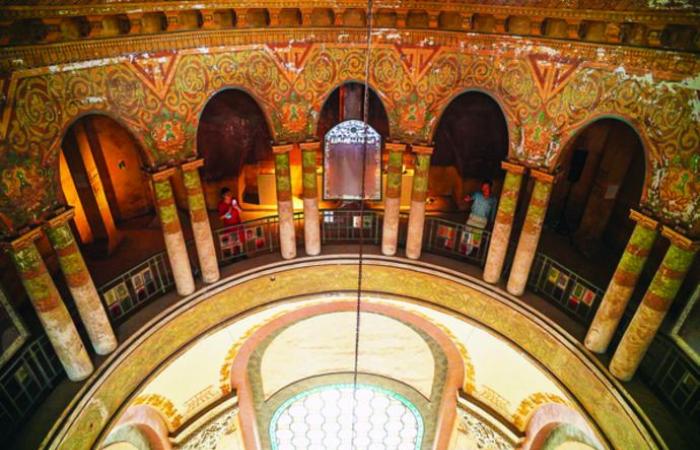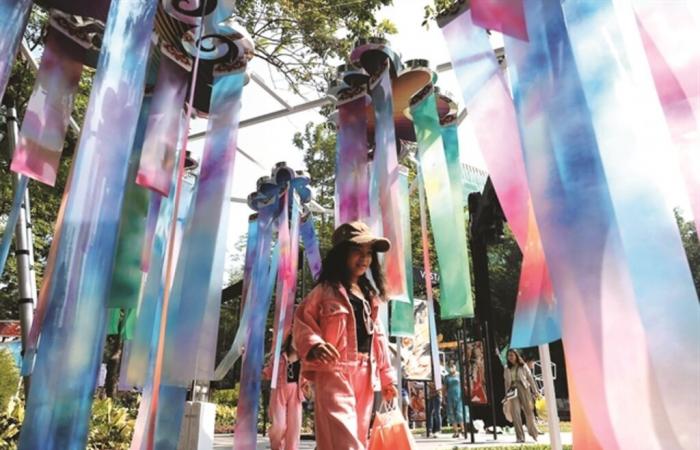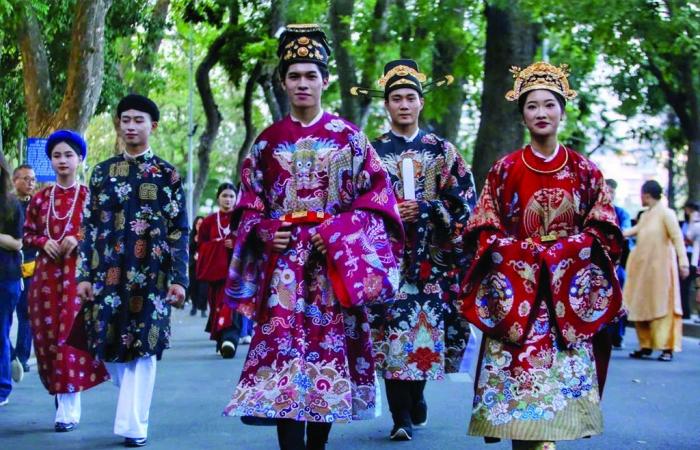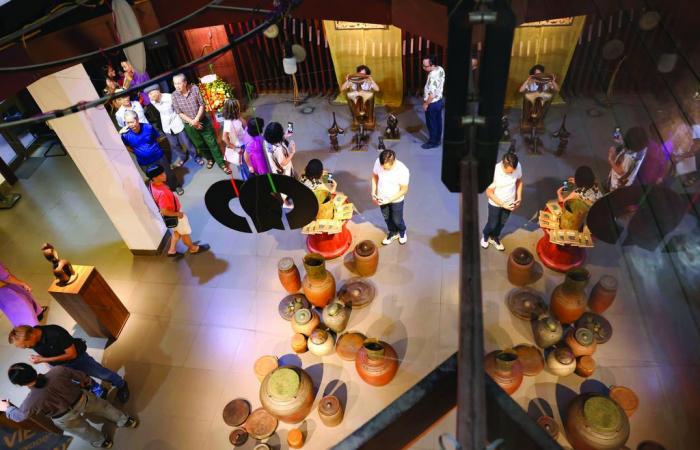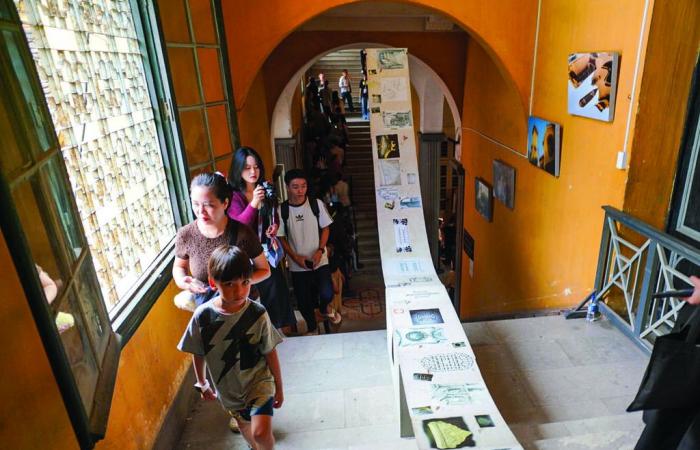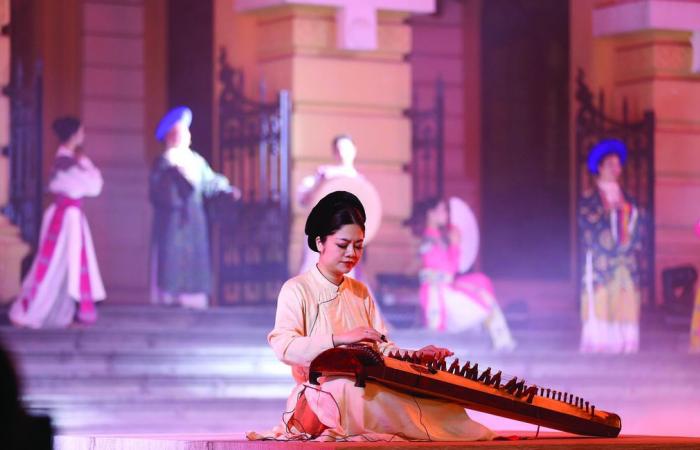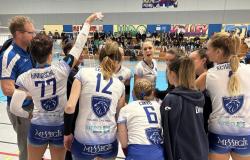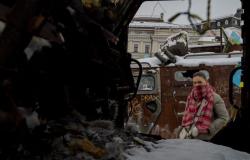>> Hanoi 2024 design and creativity activities attract crowds
>> Hanoi Creative Design Festival 2024 draws crowds
| Visitors explore the interactive art exhibition complex titled “Cam thuc Dông Duong” (The Senses of Indochina) in the former building complex of the University of Natural Sciences. |
| Photo : VNA/CVN |
Under the theme “Creative Intersection”, the Hanoi Creative Design Festival 2024, which took place from November 9 to 17, offered a veritable explosion of innovations and discoveries. For its fourth edition, the event offered a series of fascinating activities, transforming the city into a vibrant crossroads of creativity, where art, design and imagination met in a dynamic and colorful celebration.
The festival was hosted across seven of the capital's iconic heritage sites, with dynamic programs across a wide variety of creative fields: architecture, design, visual arts, performing arts, film, fashion, music, crafts, publishing, advertising, games and software and culinary arts.
| The installation “Cuc quang” (Polar Aurora) is inspired by the aurora, a unique natural phenomenon that appears in the polar regions of the Earth. |
| Photo : VNA/CVN |
The main venue of the festival was located on the August Revolution Square, in the middle of the axis called “Cultural Heritage” (including Ly Thai Tô and Lê Thanh Tông streets).
The “Creative Economy” axis ran along Tràng Tiên Street, which houses prominent architectural monuments such as the Children's Palace, the National Museum of Vietnamese History, the Government Guest House (Bac Bô Phu), the Hanoi Opera House, and the University of Natural Sciences under the National University of Hanoi, as well as cultural spaces such as Hoàn Kiêm Lake (Lake of the Restored Sword) and the five flower gardens of Ly Thai Tô, Diên Hông (Con Coc), Cô Tân, “August 19” and Tao Dàn.
Installations et performances
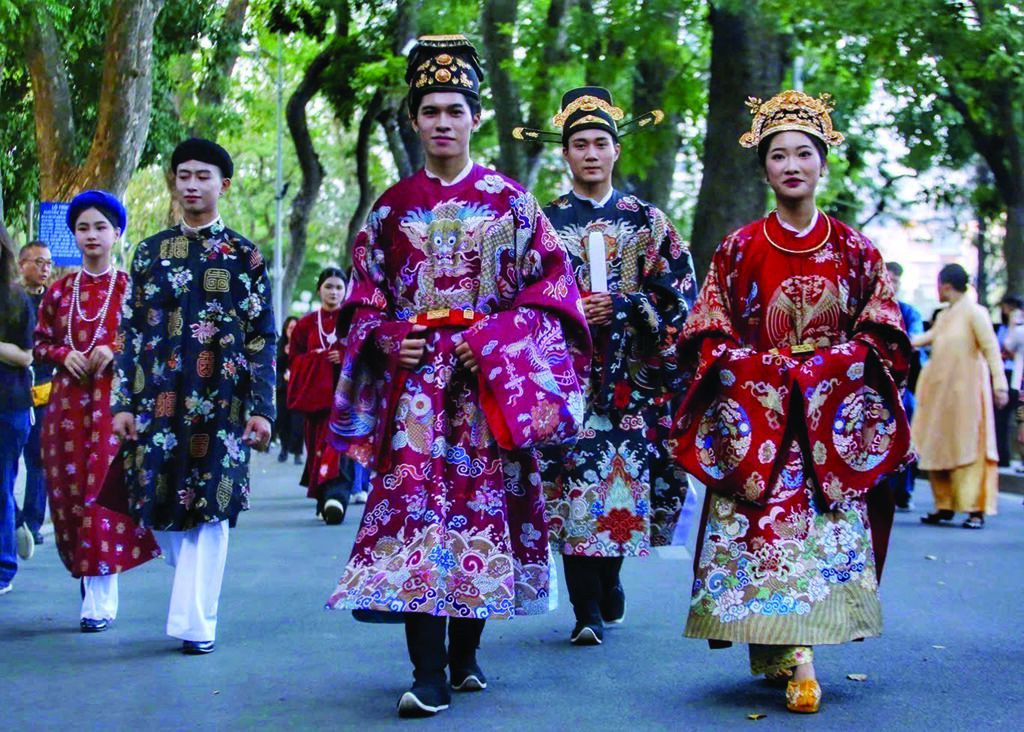 |
| Vietnamese royal costume parade at the festival. |
| Photo : VNA/CVN |
The creative spaces and exhibitions in the former building complex of the University of Natural Sciences attracted a large number of visitors. “The building might appear French neoclassical at first glance, but its design features are inspired by traditional Vietnamese art, blending Indochinese aesthetics with European cultural and scientific influences“, a estimé l'artiste Nguyen The Son.
One of the highlights was the interactive art exhibition titled “Dong Duong Cam Thuong” (The Senses of Indochina), which presented 22 artistic installations and light performances. This event brought to life the nostalgic sensations of Indochinese art and architecture through various works of art mixing sound, imagery and light.
The Hanoi Children's Palace also offered a wide range of interactive activities where people of all generations could play, learn and interact with each other. Families participated in painting activities on the sidewalk, played in the sand along the pavilion “The hallway is quiet” (Corridor of Innocence), or immersed themselves in the captivating world of activities at the Hanoi Children's Palace, a real journey between past and future. Titled “Future Nostalgia,” this immersive experience featured a series of creative installations, avant-garde design works, symbolic structures, fascinating exhibitions, captivating cinematic projections and magical artistic performances.
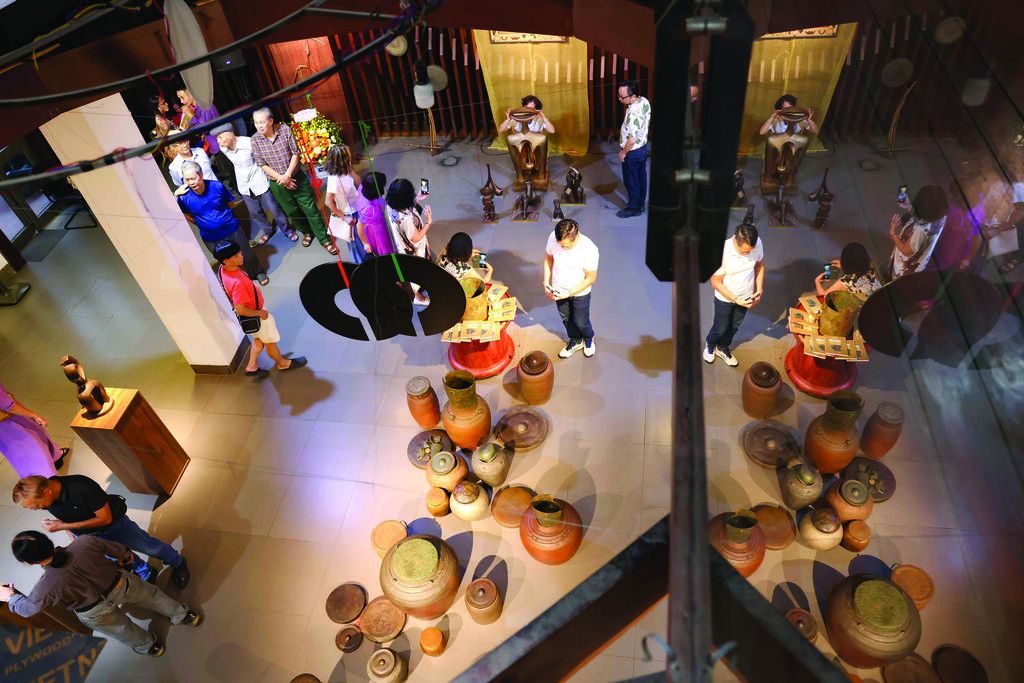 |
| The Hanoi Creative Design Festival concluded on November 17. In nine days, it attracted nearly 300,000 visitors. |
| Photo : VNA/CVN |
At the National Museum of Vietnamese History, the pavilion entitled “Roaming into the clouds“(Dragons and Serpents Rising to the Clouds) presented models of the museum made from various materials such as wood, ceramics and porcelain, attracting a large audience.
The Bac Bô Phu Building, once the residence of the Governor General of Northern Vietnam and later the Northern Administrative Office, has historical significance as the site of the first revolution in Hanoi in 1945 and the liberation of Hanoi in 1954. This space architectural landmark was transformed into a unique creative venue and was opened to the public for the first time during the festival.
A variety of outdoor art installations and exhibitions were organized such as souvenir installation and exhibition, exhibition on the theme of “educational heritage”; installation, exhibition and presentation of creative works at the Children's Palace; exhibition activities in the fields of fine arts, photography, fashion and painting…
In addition, more than 20 national and international workshops and seminars on creative industries were held, including on themes such as artificial intelligence and architecture, Cu Li never cries: thinking of the city of Hanoi as a cinematic character , human memory and artificial intelligence: the role of technology in the conservation of heritage, tradition through the prism of contemporary architecture and architectural heritage in a creative city.
Dynamic creative hub in Asia
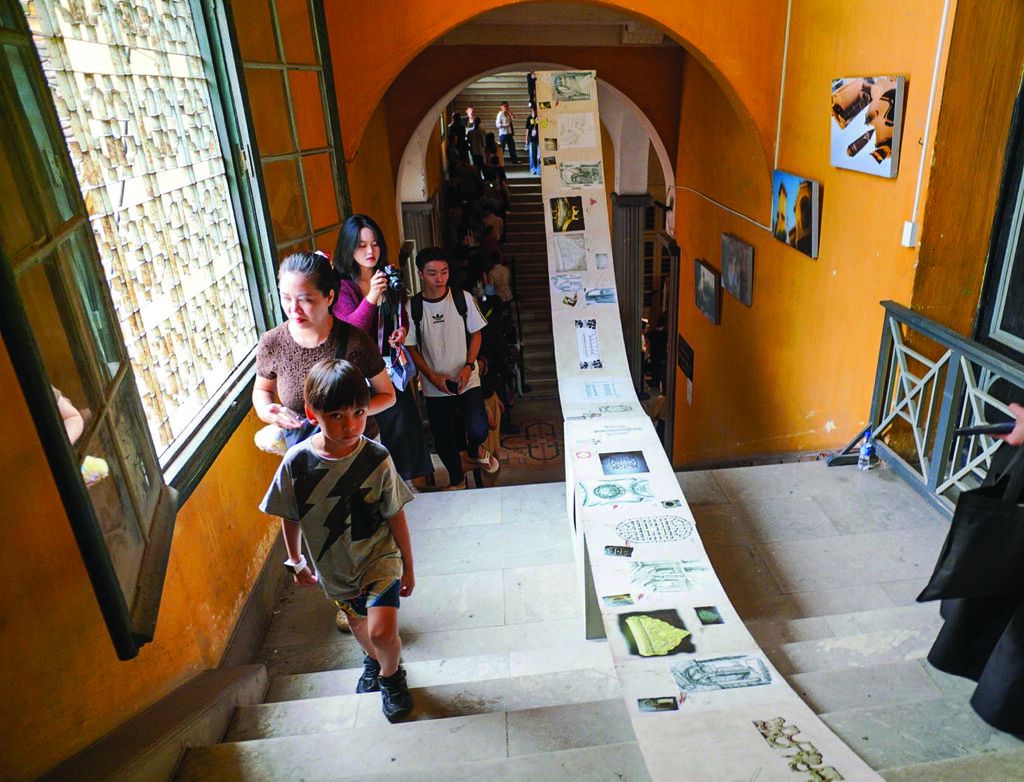 |
| Hanoi Creative Design Festival 2024 showcasing the capital's rich cultural resources. |
| Photo : VNA/CVN |
Hanoi has had many initiatives as a member of the UNESCO Creative Cities Network. After officially joining in 2019, the capital became the first city in Vietnam to become a member of the UNESCO Creative Cities Network.
“The progress the city has made since joining the UNESCO Creative Cities Network almost five years ago. The city has actively promoted creative initiatives and fostered collaborations within the network, affirming its role as a dynamic creative hub in Asia. Key achievements in 2024 include its preparations for the creation of the Creative Activities Coordination Centre, which connects organisations, experts, artists and community groups in the creative design sector”, underlined Vu Thu Hà, vice-president of the Hanoi People’s Committee.
Jonathan Wallace Baker, chief representative of the UNESCO Office in Vietnam, said the festival was part of Hanoi's ongoing commitment to honor its designation by UNESCO as a “Creative City”.
He praised the city's progress towards becoming Vietnam's creative capital and regional innovation hub. Through strong public-private partnerships to accelerate cultural industries and creative activities, Hanoi has shown that culture can create motivation for socio-economic development by mobilizing new resources, thereby helping to create a better life for all. citizens.
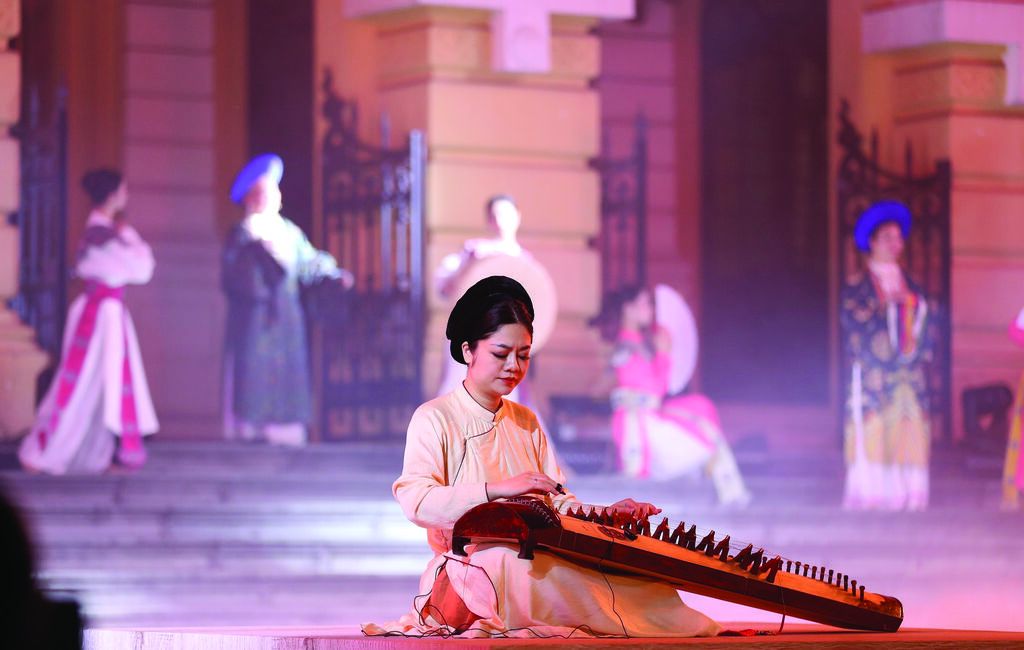 |
| An artist plays the traditional Vietnamese zither during the opening ceremony of the festival. |
| Photo : VNA/CVN |
This annual festival is jointly organized by the Hanoi Culture and Sports Department and the magazine Persistence (Architecture), under the direction of the Hanoi People's Committee and the Vietnam Architects Association. It helps raise awareness among businesses and the community about creativity in the development of cultural industries.
Bùi Thi Thanh Huong, deputy editor-in-chief responsible for the magazine Kien thinginformed that in addition to evoking the familiar heritage of the inhabitants of Hanoi, this 4e edition aimed to awaken the creative spirit of the community.
The festival also sought to foster a sense of collaboration within the community, attracting not only creative experts and artists, but also individuals and organizations from various fields and industries.
Thuy Ha/CVN

